Affiliate links on Android Authority may earn us a commission. Learn more.
What's the best media streaming device? Here's our top choice and 9 runners-up
April 28, 2023
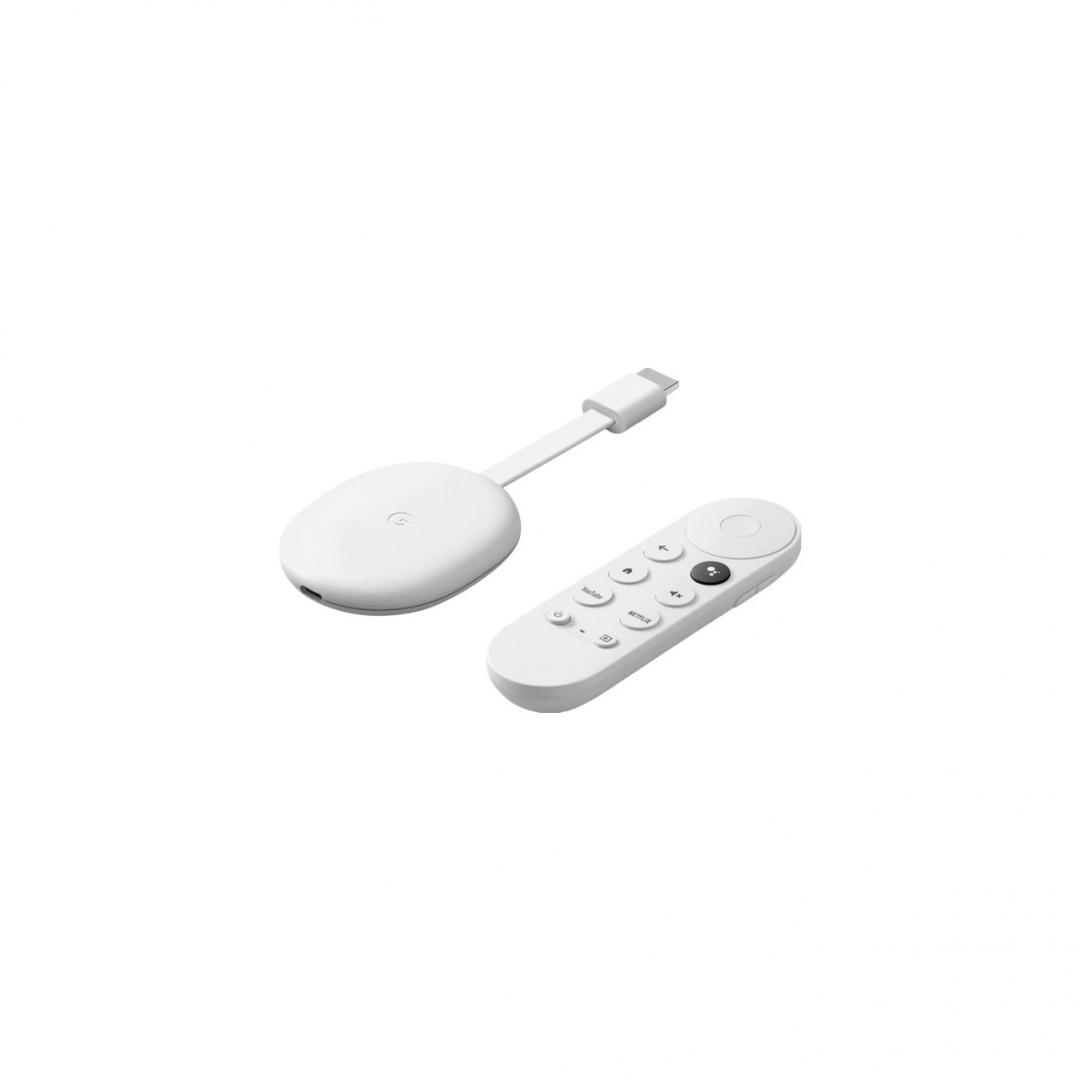



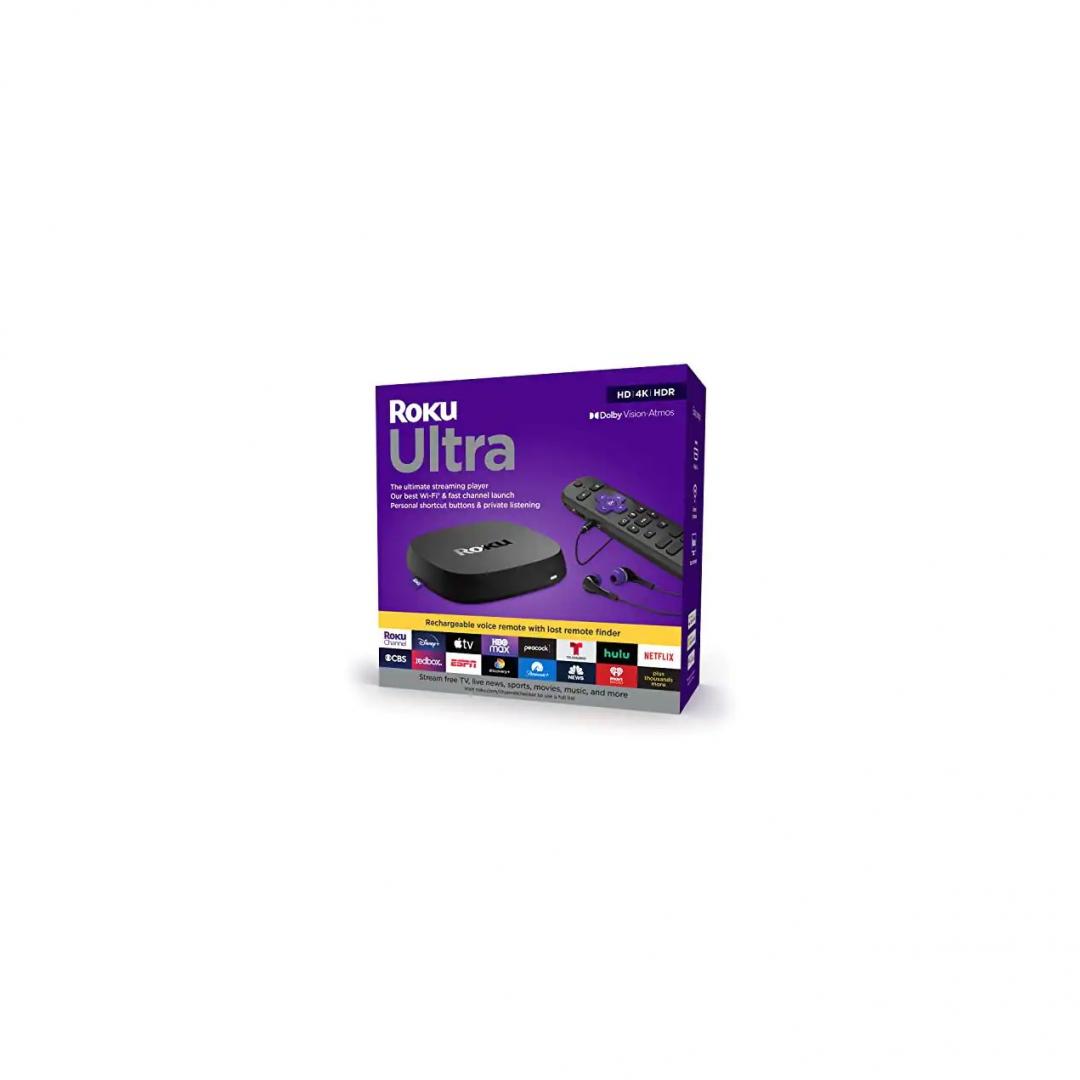













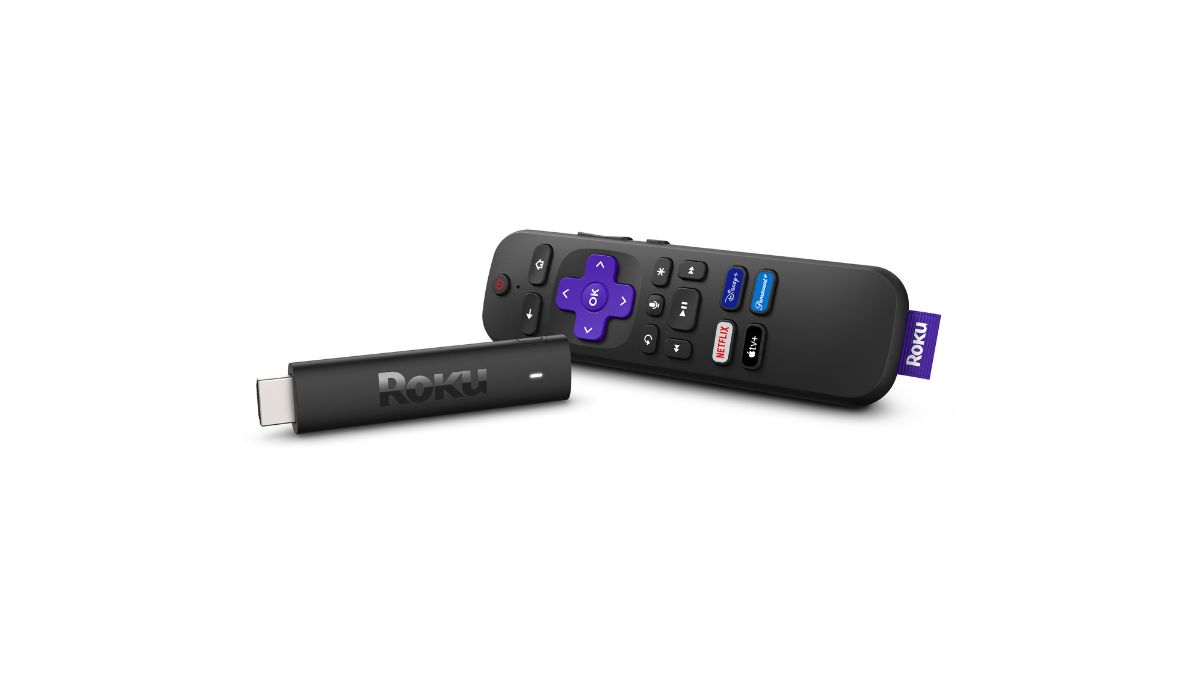

Finding the best media streaming device depends on a lot of factors. If your priority is a low cost, gaming, 4K streaming, portability, or just a cool remote control, that can have a significant impact on which device is suitable for you.
Still, there are some basic functions you need to rely on, like access to all the major streaming services, a usable interface, and a price that matches the quality of the device. That’s why we’ve looked at all the major players to crown one winner as the best media streaming device on the market. If it doesn’t meet your needs, though, we also have nine runners-up that all excel in different ways.
Whether you just want a quick way to your favorite Netflix and Hulu shows or something with enough power to make the most of your home theater, this list should have you pretty well covered.
The best media streaming device is Chromecast with Google TV HD or 4K


While Chromecast virtually revolutionized how we manage streaming content on our screens, the casting device has lost much of the market share in recent years due to increased competition from Roku, Apple, and Amazon. Enter the Chromecast with Google TV, an evolution of the Chromecast that goes beyond just casting content from your phone. While it can still cast, the big change here is the Chromecast now has a full remote and a new UI called Google TV. This interface runs on top of the Android TV platform and lets you stream content from Netflix, Apple TV, YouTube, Disney Plus, Sling TV, Hulu, Amazon Prime Video, and more.
We aren’t exaggerating when we say we love the UI. It has a clean look. Navigating through titles and sections is easy and intuitive, which sadly isn’t always guaranteed elsewhere. Google TV has a better, more modern look than Roku, and it’s easier to navigate than Fire Stick. The “continue watching” menu is especially useful. It can be a little glitchy and show older stuff you watched a while back, but by and large, it gives you quick access to the shows you’re currently watching.
So, how do these devices work? Chromecast with Google TV devices basically aggregate all of that streaming content in one easy-to-use place. You can search for your favorite titles, and the Chromecast will tell you where to stream them. There’s even a “For You” tab, where Google will predict what you might like based on your existing streaming habits. The Google algorithm is pretty good and doesn’t just steer you to proprietary titles the way Netflix does. It actually uses your preferences and curates helpful suggestions. By having everything in one place, you also get to watch all of the exclusive content from disparate services in one place. If I want to watch, say, the 1990 creature feature Tremors (as I often do), but I can’t remember where it’s streaming, that’s fine. I type it into the search bar and Google lets me know it’s on Peacock.
The new Chromecast with Google TV offers the power of Android, paired with the convenience of casting.
The Chromecast with Google TV units also have a decent mix of streaming, entertainment, and even productivity apps. There are some great live TV apps, and you can easily download VPNs to access content from outside the region where you’re watching. Since Android TV is based on Android itself, you can also sideload third-party apps at your own risk. For example, one of AA’s own staff members uses this to access ABC (Australian Broadcasting Company) from the US so his kids can access Bluey earlier than stateside. Little things like that really set the Chromecast apart, especially from devices like the Apple TV and Roku players. Of course, Fire TV is also based on Android, and so it can also sideload.
Google is another bright spot for the Chromecast products. You can use the assistant for voice searches, but also ask it about the weather or other basics. Things like reminders aren’t supported, but it’s still pretty helpful. Overall, Google Assistant‘s voice search is way more convenient than having to search using just the remote and typing in letters. Once you start using it to search for stuff, you probably won’t want to go back.
As mentioned briefly a few paragraphs ago, the Chromecast with Google TV was the first Google Chromecast model with a dedicated remote control. It’s the same great remote you’ll see in the Chromecast with Google TV (4K) and (HD) versions. With one handheld accessory, you can turn your TV on and off as well as control input and volume. That means doing away with your existing TV remote, which can be especially nice if you want to avoid clutter or have a household member who can never remember which remote controls which device.
Now, one of the main drawbacks of the Chromecast with Google TV products is that the remote is pretty small and easy to lose — you’ll get very familiar with the spaces between your couch cushions. The back of the remote also comes off way too easily and it can be a tad slippery. It’s not a dealbreaker, but it can be pretty annoying over time.
The reason we didn’t talk much about the difference between the Chromecast with Google TV (4K) and Chromecast with Google TV (HD) is that they’re minimal. You’ll likely only notice the definition. The HD version only supports a 1,080p resolution. Those with a 4K TV can get a full 4K definition with the higher-end version. Other slight differences are that the 4K version comes with 2GB of RAM instead of 1.5GB, and it has added support for Dolby Vision. Oh, and you can get it in three colors, but that shouldn’t matter much, considering you’ll only get to enjoy the pretty colors when you set it up, as it will live hidden behind your television.
Regardless of which version of the Chromecast with Google TV you pick, you’ll get the best experience at a very reasonable price. There is no better bang for your buck than Google’s Chromecast with Google TV streamers.
What makes it stand out
- Great value: At $49.99 for the 4K version and $29.99 for the HD iteration, the Chromecast with Google TV is one of the more affordable one-stop media streaming devices. With all of its great features, you might expect a heftier price tag, but it’s thankfully the best and cheapest on the market.
- A dedicated remote: Having one remote control that lets you manage your streaming is a big advantage. It means less clutter and a more streamlined user experience.
- Smart home integration: Because Google Assistant powers Google TV, Google can integrate it into all of its other smart home services. That means you can control your music, house lights, Nest camera, and more. If Google Assistant can do it, Chromecast with Google TV can too.
- Top-notch interface: If you’re investing in a media streaming device, you want a pleasant user experience, and Google has created an aesthetically pleasing, easy-to-use interface.
- Plenty to watch: Chromecast with Google TV supports nearly every streaming service, as well as any app that’s available on Android TV.
The best of the rest: 9 other media streaming devices worth considering
The Chromecast with Google TV devices are the best for most people, but some of you may prioritize other features. There certainly are plenty of other options out there. One of these may be more up your alley.
- The TiVo Stream 4K is an excellent device if you prioritize live TV. It’s also pretty affordable and comes with a more traditional, fuller remote.
- The Roku Ultra is the best Roku streamer. It has a bunch of extra features and capabilities.
- The Amazon Fire TV Cube is a capable streaming device that doubles as an Echo speaker.
- The Apple TV 4K is a great device if you’re already into the Apple ecosystem.
- The NVIDIA Shield TV and TV Pro are the best for gamers and high-end users.
- The Roku Express is a great device if you’re looking for a good budget alternative.
- The Amazon Fire TV Stick 4K Max is a great streamer if you want 4K but don’t want to pay too much and prefer the Fire TV user interface.
- The Amazon Fire TV Stick and Fire TV Stick Lite are great if you like Amazon’s Fire TV UI but want to save some cash.
- The Roku Streaming Stick 4K is the best Roku streaming device if you want a high-quality Roku device with a price that makes sense.
TiVo Stream 4K is great for live TV


TiVo used to be a big name for recording TV shows to watch later without needing a VCR. It’s come a long way since then and now offers one of the best media streaming devices on the market. The Tivo Stream 4K is about the same size as the Chromecast with Google TV, and works pretty similarly too. In fact, the Tivo Stream 4K is based on Android TV, with its own additions added to the mix. We really loved the Google Assistant integration and felt it worked really well here. You can use Google Assistant to speak your streaming requests aloud, and Chromecast compatibility is handy for when you don’t want to use the TiVo interface. Instead, just cast whatever you’re watching from your other devices. It’s quick and reliable.
If the Tivo Stream 4K sounds a lot like the Chromecast with Google TV to you, you aren’t wrong. Core features like casting and Assistant are present in both devices. You also get Google Play and sideloading with both devices. Don’t let this fool you, Tivo isn’t a replica. Since convenience is one of the critical factors in choosing a media streaming device, the included TiVo remote deserves a quick mention. The remote is bigger than most of the competition, but that’s actually pretty handy. It’s harder to misplace it, and you also get more buttons to work with. A sleek, minimalist design is great, but the functionality of number buttons, media controls, a Live TV shortcut, a dedicated TiVo button, and more really make this a standout as a functional tool to help you navigate your streaming needs.
For live TV fans, TiVo also has streamlined integration with Sling TV, so you get content as it airs and a DVR option (like old-school TiVo) to watch stuff later. Since some live content doesn’t always make it to streaming services right away, this can be a really useful feature.
The big drawback with this one is its peculiar interface. After years of Netflix fine-tuning its interface, you’d think every competitor would roll out something decent, but that hasn’t been the case. Sadly, TiVo Stream 4K offers a rather unideal user experience. Or rather, two. It combines the Android TV UI with its own custom interface, which makes for a busy screen with redundant functions. As we mentioned in our original review, it’s like “a UI within a UI.” If you can get past that, though, it’s a solid choice.
What makes it stand out
- Affordable: At $49.99, the TiVo Stream 4K is at the lower end of the pricing scale.
- Standalone remote: A large remote offers convenience (and you won’t lose it easily).
- Sling TV integration: A solid choice for fans of live TV streaming.
- Google integration: Use Chromecast and Google Assistant to enhance your experience.
Roku Ultra is the most powerful Roku around


Roku is one of the biggest players in the game, and it offers many options. The Roku Ultra is the heavy hitter, with top performance and lots of nifty features. If you like Roku and don’t mind the extra expense, it’s a pretty sure bet. Roku Ultra offers some of the best streaming quality around, as long as you have the TV for it, with Dolby Vision HDR support. It also has a sleek interface that’s easy to use and also gives you access to the Roku Channel to watch shows and movies.
The Roku remote is conveniently small and does have some bright colors to make it easier to spot against dark surfaces — be ready to look under couch cushions, though, as it has a habit of getting lost in tight places due to its compact size. Unlike the others on this list so far, the Ultra has an added bonus trick up its sleeve: a remote finder function. Pressing a button on the Roku device sends a signal to the remote, which in turn emits a sound. As long as your remote has charged batteries and isn’t in another room, you’ll be able to hear it and retrieve it easily.
Unlike many of these remotes, which favor Netflix, Roku offers dedicated buttons for popular streamers like Hulu, Disney Plus, and Sling TV, which are welcome time savers if you already know what you want to watch. And with earbuds that plug right into the remote, it’s one of the very few devices that allow you to watch TV without Bluetooth headphones. Its support for Google Assistant and Alexa are welcome additions too, but you’ll likely notice they can be a little spotty, and you have to revert to the remote and navigate to what you want the old-fashioned way from time to time. It’s not ideal for fans of voice commands.
At $99.99, it is twice as pricey as a lot of the competition, so you’ll need to consider if that’s worth it for you. At that price point, you may also have less patience for the many ads that populate your home screen and screen saver.
What makes it stand out
- High-res streaming: Dolby Vision HDR support gives you the possibility of a pristine image if your TV can keep up.
- The Roku Channel: A vast library of free content to stream if you don’t have a ton of subscriptions.
- Clean, reliable interface: Roku’s been at this long enough that the user interface is really top-notch.
- Remote with dedicated streaming buttons: Jump straight to the streaming service you’re looking for with Netflix, Hulu, Disney Plus, and Sling TV buttons.
Amazon Fire TV Cube doubles as an Echo speaker


The Amazon Fire TV Cube is most obviously competing with Apple TV, and it holds its own as a similarly robust media streaming device, one of the best on the market. It’s almost as expensive at $139.99, too, and the look on the latest version has been greatly improved.
You get full 4K, Dolby Vision, AV1 codec, and HDR 10+ support for terrific picture quality. As long as you’ve got a TV that can register that difference in resolution, you’ll see it.
A nice thing about the Fire TV Cube is that it effectively doubles as an Echo speaker and has full Alexa functionality, so you really get a one-stop device for your home media needs. It also reacts fast thanks to powerful memory and storage, which makes up for the fact that it’s a pretty bulky little device. Unlike other Amazon devices, the Cube itself picks up your voice, so you don’t need to use the remote when you activate Alexa. This is why you don’t get an Alexa remote included, which we actually saw as a downside in our review. Even so, the Cube mics are also plenty sensitive, so voice commands are a breeze. You can easily pause and learn fun facts about whatever you’re watching without ever getting up or reaching for anything.
If you’ve used other Fire TV devices, you’ll already know that Amazon’s interface is sleek and user-friendly. It combines all of your apps, including virtually every streaming service out there, and makes them all easy to navigate on a modern screen without any clutter.
The sound quality is pretty good. Suppose you already have another Amazon Fire TV device. In that case, our advice is to get an actual Alexa or Echo speaker and pair everything for effectively the same streaming advantages plus better sound quality.
Suggested viewing is also hit-or-miss. Whatever algorithm Amazon is using clearly favors content from its own Prime Video service. It makes sense as a way to drum up buzz around its own titles, but it’s not a feature meant to genuinely find what you’re most likely to want to watch. Similarly, Alexa isn’t always in sync with non-Amazon services. You might ask her to “play Ozark” on Netflix but get stuck on the profile selection screen, where you’ll have to manually choose a profile using your remote. Not the end of the world, but not great either.
What makes it stand out
- Gorgeous design: The older Fire TV Cube was a bit ugly. This one looks much more modern and sleek.
- Top-quality image resolution: 4K, Dolby Vision, AV1, and HDR 10+ support put this device in the big leagues.
- Alexa support: Get all the perks of the full Amazon experience with comprehensive voice controls.
- Content: Get access to everything you could possibly want to stream with a full arsenal of apps.
- Speed and memory: This thing is powerful and responsive.
Apple TV 4K is…well, it’s very Apple

Love it or hate it, there’s a reason Apple has a cult-like following. The company makes good products that are intuitive and well-designed, and that’s as true of the Apple TV 4K as anything. The latest version is the 2022 one, and it comes with upgraded internals. Apple also removed the Lightning connector in the remote, replacing it with a USB-C one.
At $129.99, you’re looking at a pricey investment compared to most of the competition. That’s Apple for you, though. You have to pay to play in their ecosystem. It’s a huge drawback, but if you’re an Apple person, you’re probably used to it. Apple TV 4K integrates seamlessly with your other Apple products. You can cast content from iOS devices, connect to smart home devices like HomePods, and use Siri.
The Apple TV 4K is undoubtedly pulling its weight as a streaming device in other ways too. You can download just about any app, and it’s all easy to control using Siri voice commands. Siri’s usually not all that great on iPhones and laptops, but it shines on Apple TV, responding to voice commands quickly and efficiently.
Apple TV’s performance has also improved by leaps and bounds in the latest version. The A15 Bionic processor — also found in Apple’s 2021 iPhone 13 series, as well as the non-Pro versions of the iPhone 14 series, and the 2021 iPad Mini — makes navigating the Apple interface and jumping in and out of apps a breeze. Even big streaming apps like Netflix and Disney Plus, which used to take a few seconds to open, have become way smoother to operate. While the Apple TV Plus app is pretty unpleasant to use, the broader Apple TV interface is simple and easy to navigate. No complaints there.
And the whole thing is controlled by one of the coolest-looking remotes in streaming. The small, black plastic and aluminum controller has a modern, minimalist look. While it’s generally user-friendly, the remote is admittedly a little fussy. The trackpad is a welcome addition to the latest version, but it still takes some getting used to, and it’s so small you’re almost guaranteed to misplace it or lose it in your couch cushions at least a few times.
The Apple TV 4K is a good product, no doubt, but whether it’s worth its steep price tag will depend on your budget, your interest in Apple, and your general streaming needs.
What makes it stand out
- Minimalist, user-friendly remote: It may be tiny, but it’s also the most modern, stripped-down remote on the market.
- Best-in-class image: With 4K support, it delivers on resolution.
- Apps and games: Apple is unbeaten for its access to games and apps.
- Seamless Apple integration: If you’re part of the Apple ecosystem, this will sync perfectly with all of your other devices.
NVIDIA Shield TV and NVIDIA Shield TV Pro are tops for gamers



Another pricy option, NVIDIA Shield TV, is nevertheless a strong contender, especially for gamers who need the extra speed and memory from their media streaming device.
Probably the best Android TV box, the Shield TV is a high-performance streaming box. The classic model gives you performance without too many bells and whistles for $149.99, while the Pro takes advantage of processing potential for gamers, at a slightly higher price of $189.98. For example, the Pro can handle heavy gaming needs, record gameplay, and stream to Twitch. The storage and RAM can handle more demanding Android games like Half-Life 2, the Borderlands series, The Witness, Doom 3, Resident Evil 5, Portal 2, Tomb Raider, and Metal Gear Rising Revengeance.
The Toblerone-shaped remote that comes with both versions is bigger than the previous model and much harder to lose. There’s also a new find-my-remote feature for an instance when you do need to track it down. The remote works well, though Google Assistant is the easiest and most pleasant way to navigate menus. Admittedly, there’s a reason most TV remotes aren’t shaped like this, but while the hard-to-lose block looks a little weird, it’s actually much more comfortable to hold than you might expect from looking at it.
One of NVIDIA’s neatest party tricks is real-time AI-enhanced 4K image upscaling. The device takes HD video and upgrades it while you watch so that everything looks like 4K, whether the source actually is or not. It’s not perfect. Some images are sharpened in a way that makes them look a little unnatural. You can play with settings to get an enhancement level that works for you, though. Your mileage may vary on how cool this feature is, but it’s there if you want it.
For standard viewing, the Shield TV is equipped with 4K, Dolby Atmos, and Dolby Vision, so picture quality and sound are top-notch, as long as your TV matches that quality. That puts both versions of the NVIDIA Shield TV in the big leagues with the likes of the Apple TV 4K and Amazon Fire TV Cube.
What makes it stand out
- Impressive memory: 8GB of storage and 2GB of RAM in the regular model, with 16GB of storage and 3GB of RAM in the Pro.
- Google integration: Use Google Assitant for easy voice controls.
- Top-tier image and sound quality: 4K, Dolby Atmos, and Dolby Vision put Shield TV in the big leagues.
- AI image upscaling: A fun use of machine learning to “upgrade” HD images to 4K.
Roku Express is the most affordable Roku

If you want something cheap that gets the job done, you can’t really go wrong with the Roku Express. It may not be the best media streaming device overall, but it’s the best budget option by a wide margin.
There are plenty of reasons to opt for the Express. First off, Roku has a solid, reliable interface, and it accesses all the major streamers. If you like that and are on a budget, you’re basically getting Roku on the cheap. That includes tons of free titles on the Roku Channel — another big plus if money is tight. At $29.99, you won’t do much better elsewhere.
It’s also portable. This is one of the tiniest streaming dongles on the market. You can fit it in your pocket easily. I used to travel for work a lot, and in retrospect, the Roku Express would have been the perfect device for me to stream stuff at the end of the day using TVs in hotels and Airbnbs.
This is not for the hardcore streamer, though. If you want a 4K image and lots of memory, this isn’t it. The Roku Express supports 1080p streaming. That’s it. And don’t even think about gaming. It’s also controlled by a handy remote, but the included controller only lets you navigate the Roku itself. You’ll still need a TV remote too. You also won’t get voice controls, but if that’s important to you, this thing is easy to pair with an Amazon Echo.
If portability is the main draw, but you want those extra bells and whistles, the Roku Express 4K Plus, which adds faster Wi-Fi, a voice remote, and 4K streaming, may be more your speed, for an extra $10.
However, none of those limitations are necessarily a problem, depending on the user. 1080p is still HD. A lot of totally acceptable TVs are small enough that you’d barely notice the difference anyway. Again, hardcore streamers who want the best picture quality available, a one-remote solution, and voice controls will be underwhelmed by the Express model, but for someone on a budget, this thing is well worth the price of admission.
What makes it stand out
- Extremely low price: $29.99 is a heck of a bargain.
- Portable: This thing is tiny. Just pop it in your pocket and plug it into any HDMI port when you’re away from home.
- Clean Roku interface: Roku has a clean, reliable interface for a pleasant streaming experience, but be ready for ads.
Amazon Fire TV Stick 4K Max is perfect for 4K streaming on a budget


A great middle-of-the-road, all-around media streaming device playing in the same league as the Chromecast with Google TV, Amazon Fire TV Stick 4K Max is a great, affordable step down from the bulky Fire TV Cube.
With 2GB of RAM like the Fire TV Cube, along with Dolby Atmos, Dolby Vision, HDR, and 4K Ultra HD support, the speed and quality you’re likely to need are there. There’s no noticeable lag or stuttering to report, and the new Wi-Fi 6 capabilities mean it boots up immediately (if you have a compatible router). It’s also a breeze to set up. Everything you need is included in the box, and you just plug it in and go.
If you don’t need the smart speaker features of the Fire TV Cube, you’re looking at very similar performance at half the price. At $54.99, you’re still spending a few dollars more than you would for comparable Google and Roku devices, but Amazon has certainly kept this thing competitive.
Amazon generally makes good, easy-to-use remotes too. They’re comfortable to hold and make navigating quicka and easy. Dedicated buttons for Netflix, Hulu, Prime Video, and Disney Plus make that even better. Alexa functionality can be a little hit or miss. You need to be holding the remote to use it, for one thing. While voice commands generally work well, it can hit some snags, like leading you to the Netflix profile menu rather than the content you actually asked for. At that point, you have to switch to manual controls. It also annoyingly defaults to suggesting seemingly random Prime Video titles when it can’t give you what you’re looking for.
All that being said, if you like the Amazon ecosystem, this device delivers on pretty much every level.
What makes it stand out
- Easy set-up: This thing pretty much installs itself when you plug it in.
- Competitive performance: At this price, the speed and memory are top-notch.
- Decent pricing: While $5 above the competition, the price is definitely in a reasonable ballpark.
Amazon Fire TV Stick and Fire TV Stick Lite are affordable Amazon options



If you want a Fire TV Stick but are still put off by the $54.99 price stage above, one of the Fire TV budget options is worth a look. These are the Amazon Fire TV Stick and Stick Lite.
With both of these little dongles, you get the same menu and user interface as the more robust Fire TV Cube, but don’t expect the same performance. There will be some lag time, as the quad-core processor just isn’t quite as mighty, and it shows during use. And fans of 4K will want to look elsewhere, but these will do for HD streaming with a full arsenal of services available. The Lite is just $29.99, with the classic Fire Stick at $39.99, so neither is breaking the bank.
The two Fire Sticks come with the familiar Amazon remote. The remote is comfortable to hold and intuitive to use. Its minimalist design has few buttons, but a navigation wheel and a handful of controls make it a pleasant experience. Alexa functionality can be a little glitchy and slow, but it does make menu navigation quicker and easier.
The biggest difference between the two models is that the remote for the Lite only controls Amazon Fire TV functions. You still need a TV remote. The classic Fire Stick, on the hand, has a remote that can adjust your TV’s volume and other functions, which can be a nice extra convenience for the $10 surcharge. In most cases, we recommend avoiding the Lite and paying the additional $10, but it’s up to you.
What makes it stand out
- Affordable: These are contenders in the budget space at $29.99 and $39.99.
- Basic functionality: Despite maxing out at HD, the Fire Sticks give you access to all the great content you could want.
- Compact and portable: As with the Roku Express, these are easy to take on the road with you.
Roku Streaming Stick 4K is Roku’s all-rounder


Up there with the Amazon Fire TV Stick 4K Max and our top Chromecast pick, the Roku Streaming Stick 4K is a great choice for anyone looking for the best media streaming devices that check all the major boxes.
Roku packs plenty of power into the Streaming Stick 4K. The 4K resolution is crisp and smooth, putting this in the big leagues for performance. If your TV is compatible, you’re in for some top-quality streaming. This thing is notably faster than Amazon’s rival Fire TV Stick 4K, not lagging at all during use. It’s also tiny, fitting in your pocket for easy portability.
Included is a Roku remote control that you can use for all of your standard TV functions, letting you do away with a second remote just for your TV.
In addition to voice controls, the remote has four dedicated streaming service buttons for quick access to the content you want to watch. Sadly, you can’t remap those, so you just have to hope the version you get, which is dependent on region, includes your favorite streaming sites.
It would be nice if this included the rechargeable Voice Remote Pro, with extra buttons and a remote finder feature, but you’ll have to buy that separately or get it with the Roku Streaming Stick 4K Plus if you want it. As it stands, the included remote works fine and is a perfectly adequate inclusion. It’s small and easy to lose, but it’s also comfortable to hold and entirely functional.
What makes it stand out
- Good value: For $49.99, this is a great deal.
- Portable: This is a tiny device considering its speed.
- Voice remote: The voice remote makes navigation much easier.
- 4K and speedy processing: You’ll likely have no complaints when you see how fast everything loads and how good the picture quality is.
What to look for in the best media streaming devices
Speed and image quality
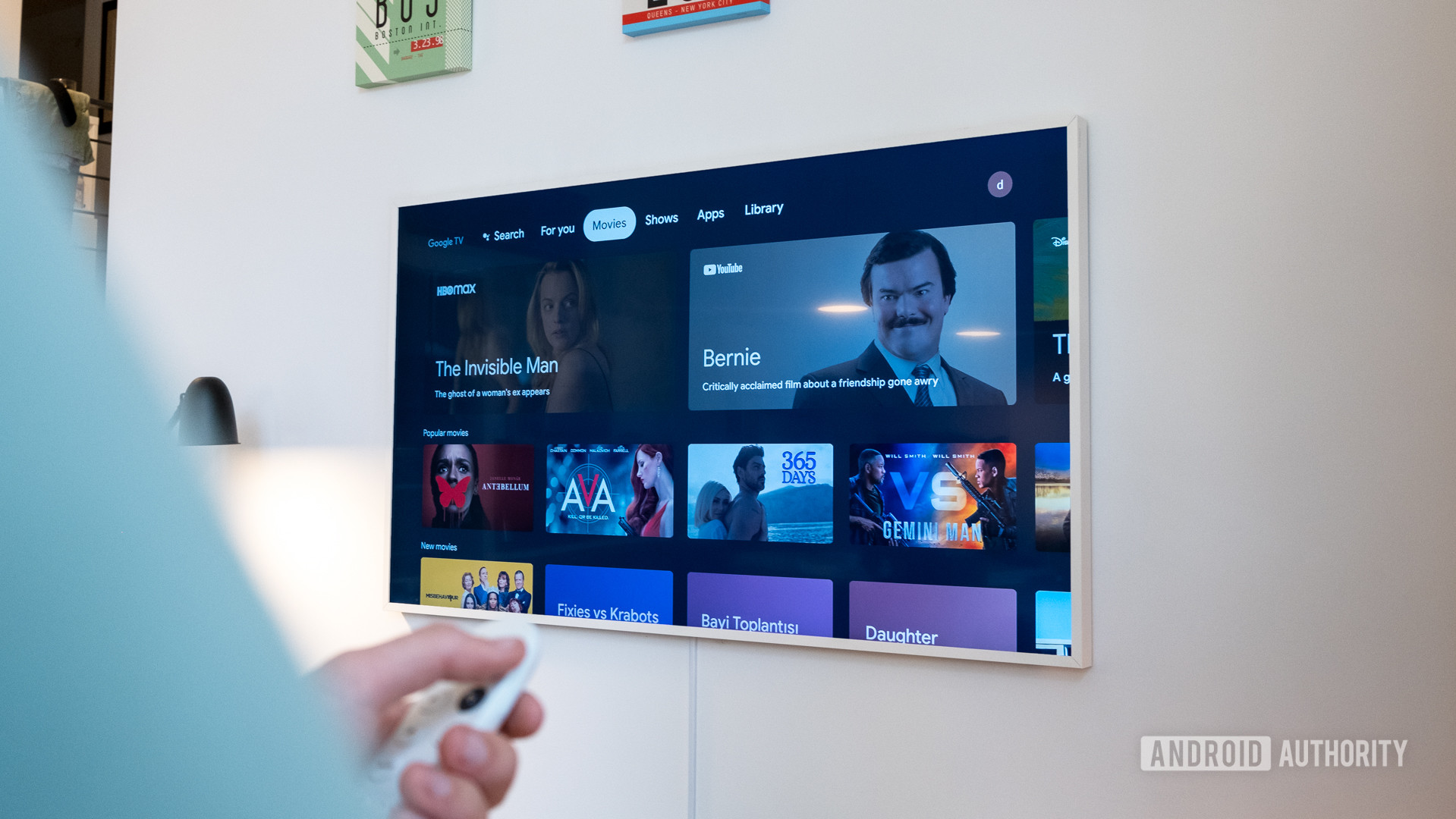
Not everyone needs 4K resolution or even HD. Then again, some people refuse to waste their time on anything less than the best. Ditto for slow loading times. I personally don’t mind waiting a few extra seconds for apps to load if it means saving a few dollars, but a lot of people disagree with me. Figuring out your specific needs is important. A stronger processor and 4K capability will give you a smooth experience with a great image. If that’s what you want, look for that specifically.
A good remote control
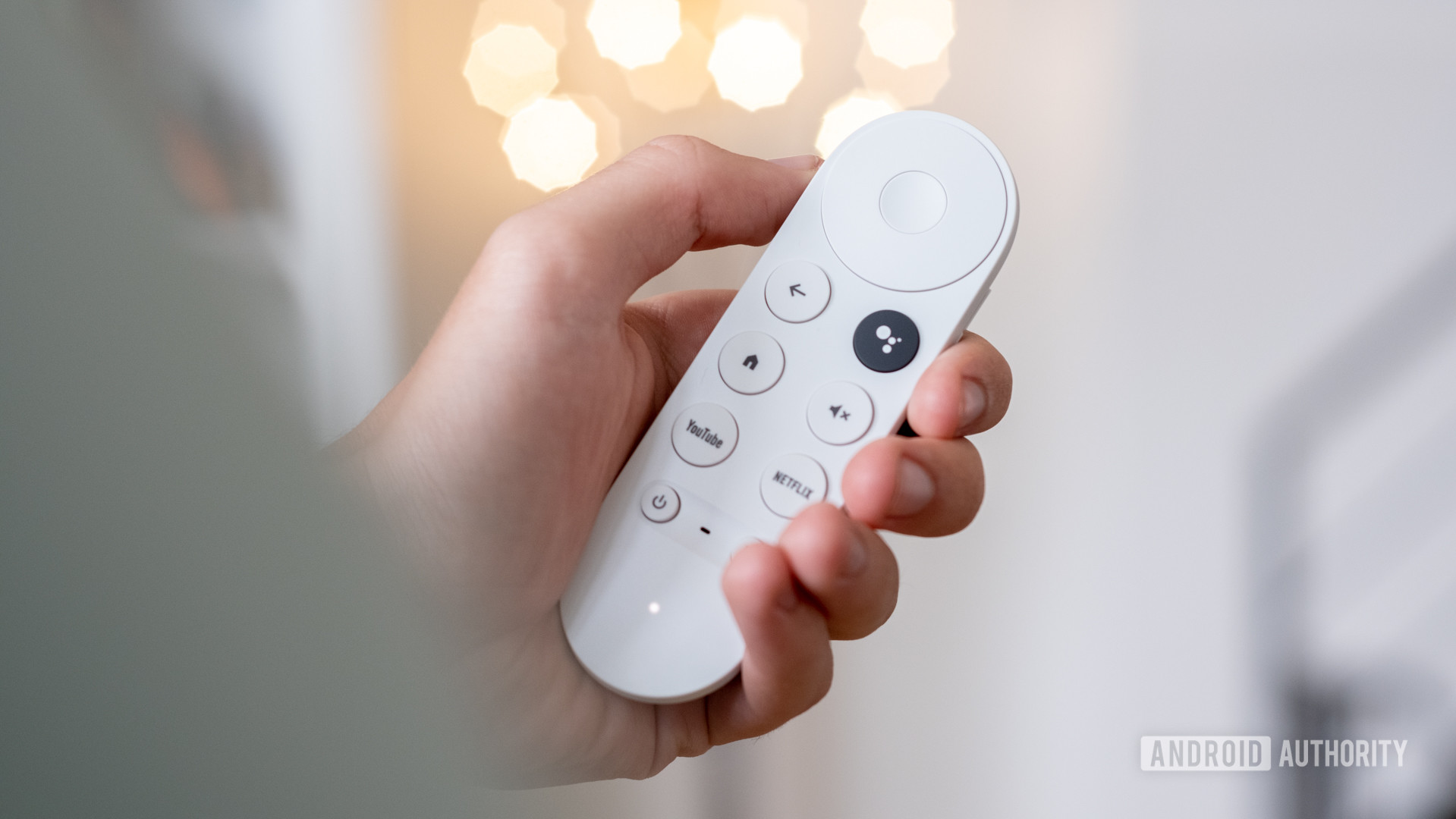
Do you want a button for every single command, or a sleek, minimalist remote that looks good on your coffee table? Have a look at what comes with your preferred device before you make your final choice.
Portability vs a permanent set-up
Are you hoping to travel with your device, or do you want something to plug in at home that you’ll never touch again? Taking an Amazon Fire TV Cube on the road sounds like a nightmare, but if it’s meant to be a permanent fixture in your home, you probably won’t care about that.
Access to the right apps
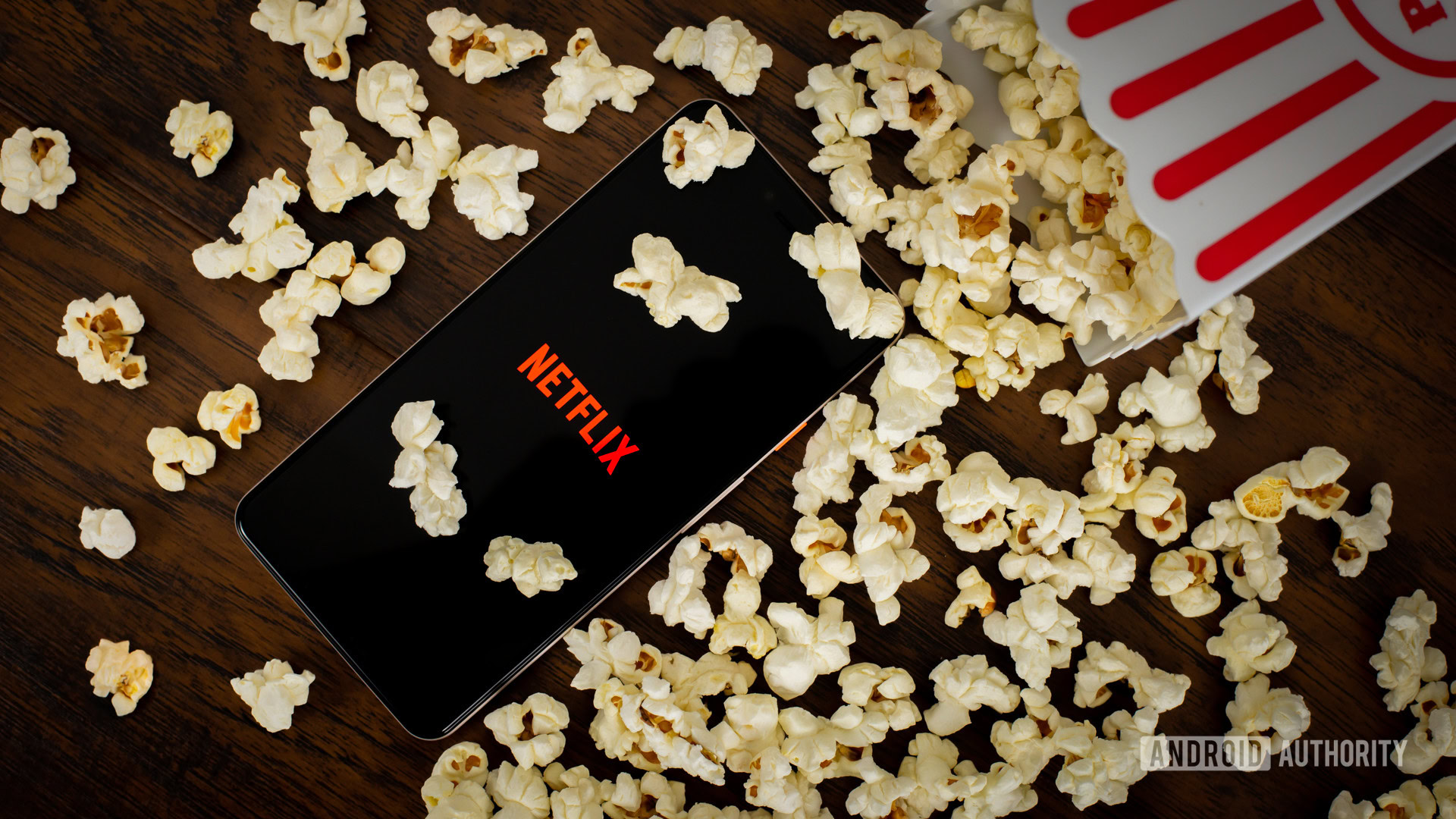
It sounds like a no-brainer, but some apps aren’t supported on all the best media streaming devices. For a while, you couldn’t get HBO Max for Roku devices, which was a huge setback for both Roku and HBO Max. Why would you want a streaming service that you can’t play through your media streaming device? Or why would you choose a media streaming device that didn’t support your favorite streaming service? Luckily, the service is now available on Roku, but it’s something to keep in mind when making your choice.
Price
At the end of the day, you want to make sure you’re staying within your budget. A lot of these media streaming devices come in at similar price points, so there’s still some wiggle room for getting other features you want.
Why you should trust us & how we test
Android Authority has been actively covering the best media streaming devices for years. Our dedicated streaming and entertainment experts test dozens of streamers. They weigh a variety of factors including UI ease of use, app support, remote design, hardware design, and more. We tested every product for a minimum a week. During that time, we use it as our daily driver for streaming. We’ll note down the pros, cons, and things we like that we can’t find with other streamers.
We don’t necessarily waste our time with advanced benchmarking or other “nerd stuff.” Today’s media streamers are mainstream devices designed to be easy to use and just work without a lot of drama. That’s exactly what we are looking for. We want products that are no fuss, have wide app compatibility, are fast enough for the job, etc. Every product on this list meets those requirements They are fast enough, have wide app support, and typically have good remotes.
FAQs
The cheapest streaming devices we still recommend are the Chromecast with Google TV (HD), Roku Express, and Amazon Fire TV Stick Lite. All of these cost only $29.99.
The most capable streaming devices also tend to be the most expensive. We would say these very capable devices include the Roku Ultra, Amazon Fire TV Cube, Apple TV 4K, and the NVIDIA Shield TV devices.
Most streaming devices only support Wi-Fi. Some add support to LAN connections for improved, performance, though. These include the Amazon Fire TV Cube, Roku Ultra, and the NVIDIA Shield TV Pro.
Most of the popular streaming apps will be available on all the streaming devices on this list. That said, there are some exceptions. You might not find some obscure streaming services on all devices.